And a little child shall lead them. —Isaiah 11:6
“How can you show that you actively care about my generation’s future in a big enough way to change things?”
That was the question 12-year-old Hazel posed to our worship group. She and another Friend had worked together to plan the week’s discussion topic: global warming and our response to it, and this was the query she put forward.
It caught us up short. It was so personal! It was a bit in our faces, and unapologetically so. Hazel was counting on us, and her future depended—quite literally—on us . . . and suddenly the measures we had so far taken seemed, well, inadequate. How dare we be satisfied with our efforts when our nation was nowhere near meeting the “1.5 to stay alive” standard (limiting global warming to no more than 1.5 degrees Celsius to prevent the most catastrophic effects of climate change)? How dare we pat ourselves on the back for our (mostly modest) personal sacrifices when personal virtue would scarcely even begin to solve the problem?
Suddenly, we were accountable to and owed answers to a very specific person: a child we knew and loved. As it turned out, this made all the difference.
Over the coming weeks, we opened a shared document in which we posted our answers to Hazel’s query: what we had already done and what we were going to do. We used carbon footprint calculators—some of us for the first time—and were in some cases aghast at the results. We bought copies of Drawdown edited by Paul Hawken and browsed it for ideas of things we could do.
We discussed electricity contracts for all-renewable energy, shared our experiences of energy audits and window replacement, and started learning more about air and geothermal heat pumps. We compared notes on keeping manual lawn mowers sharp, alternatives to lawns, blowing in insulation, programmable thermostats, and on-demand water heaters. We shared the marvels of “Yooper Scoopers” (amazing manual snow scoops designed for the relentless winters of Upper Peninsula Michigan) and our angst around flying to see our far-flung families.
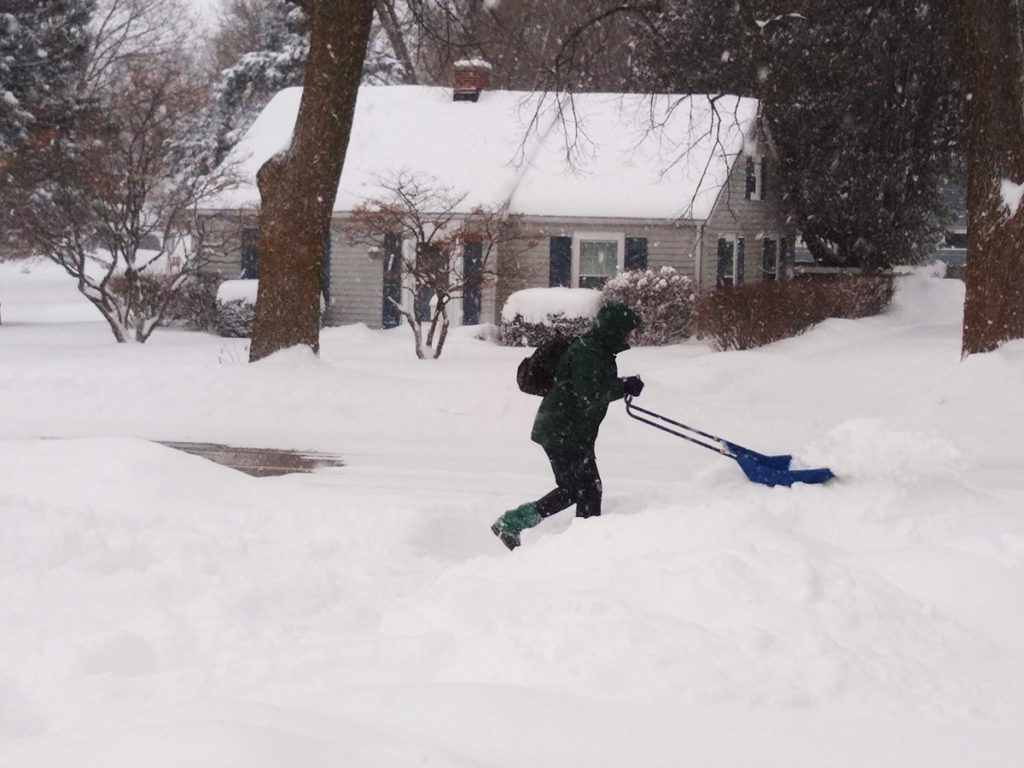
Soren removing snow with a “Yooper Scooper” (a UP—Upper Peninsula, Mich.—innovation that moves a lot of snow with no strain on the back). Photo by Kat Griffith.
Here are some of our realizations and our commitments:
Rick and Mary: Since our worship group agreed to hold ourselves accountable for our efforts to combat climate change, my husband Rick and I have made several changes. We are about to get a cool roof for our home in Florida. We sold our second car and only have one, a Prius. We organize any outings to include errands so as to reduce driving. We are researching electric vehicles for our next purchased car. We ride our bikes whenever possible but at least several times per week. We compost all vegetables and fruit waste. We have made strong attempts to reduce our own food waste. We attempt to purchase as little packaging as possible that would need to be recycled but recycle whatever we have. We assist other people in our neighborhood in Florida to recycle. We have planted ten trees on our land since we purchased it years ago. We have planted eight vegetable raised garden beds. We hired a local company to do an energy assessment on our home in Wisconsin and followed all of their recommendations, including insulating a crawl space and replacing light fixtures for improved insulation and decreased waste.
We continue to look for ways to decrease our carbon footprint. Holding each other accountable and especially accountable to Hazel has made a huge difference in how I have dealt with this issue. I feel less guilty and powerless and much more solution-focused.
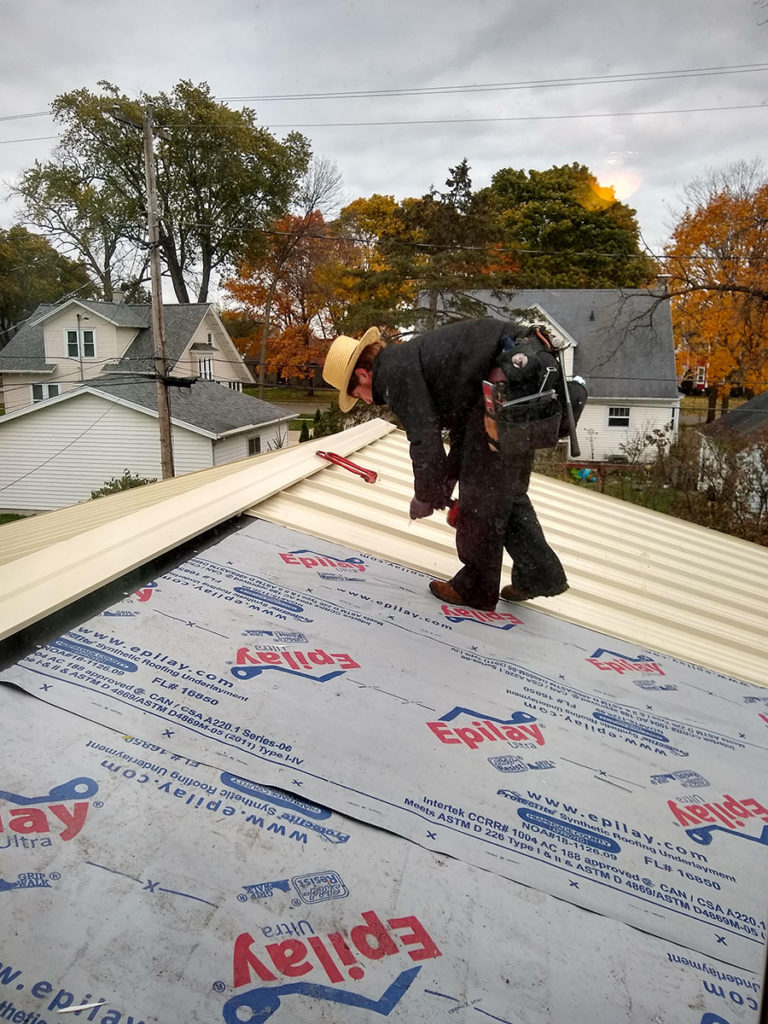
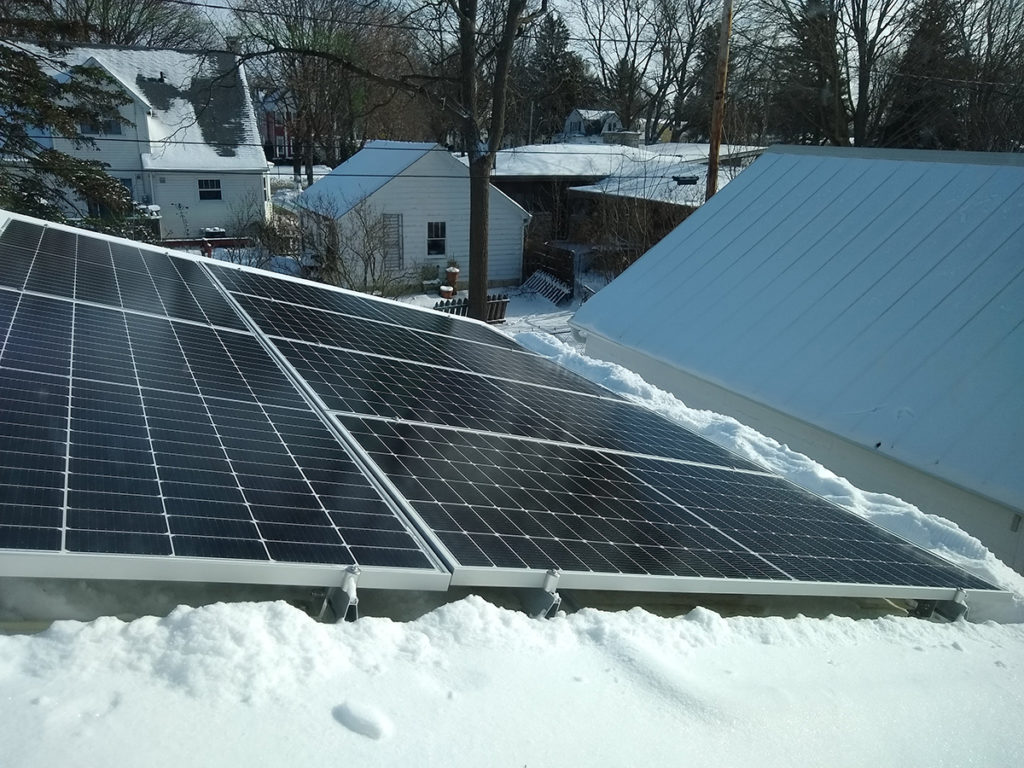
Left: Amish worker installing metal roof (light colored to reduce heat) prior to installing solar panels. Right: The solar panels. Photos by Kat Griffith.
Lynda: While caring for the earth has always been a priority for me, the combination of Hazel’s query and the pandemic made some things very clear. At the beginning of the pandemic, the world ground to a halt in many ways. Many people stopped driving, stopped shopping, and stopped eating out. We saw a lessening of pollution in many cities worldwide, which was visible from space. The changes weren’t enough to prevent climate change, even if we could sustain that manner of lifestyle. It became clear that industry must play a large part in preventing climate change and that I, as an employee of a global company, have a responsibility to take professional risks to boldly champion change. Since I am in research and development, I directly influence how we develop new products and how we commercialize those products. Any changes that are proven beneficial are rolled out globally. This gives me a huge opportunity and responsibility. I am able to take radical steps to change the way we develop new products to reduce resource usage. The changes are being adopted by my peers. I heard one co-worker say, “We could run one of Lynda’s crazy trials,” attesting to the radical nature of the change and its success. I have also been successful in rethinking my designs to intentionally target reduced resource usage while actually improving our product. The most recent success has just been deployed globally. Big companies are made up of individuals. When individuals are willing to be radical, we can make radical changes.
Barbara: In the year since we first wrote the letter to Hazel, my life circumstances changed, and I am slowly beginning to consider what actions I might engage in. I am still not up for political engagement, but that might change in time. I’ve heard from others that my 30 years of commitment to a vegetarian diet for the sake of the planet has inspired others, and I realize that I’ve been working on small changes as a result of the role models in our worship group.
Yesterday, dining out, I actually remembered to bring my own leftover container! I’m acutely aware of plastic packaging and looking for alternatives.
The change in my life circumstances involved the death of a loved one whose care I had managed for many years as he struggled with Alzheimer’s. Now I am the recipient of a large inheritance, opening the door for other possibilities like an electric car. I will continue to seek wisdom and guidance from the Spirit and find a path forward.
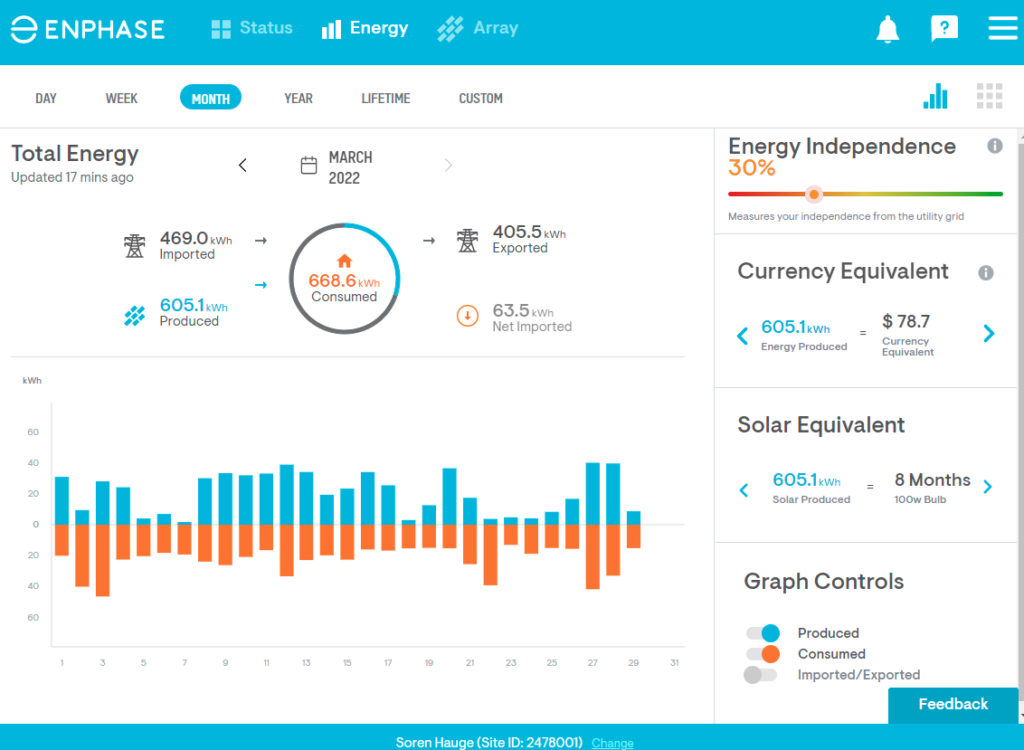
Real-time data display on the electricity generation. Image courtesy of Soren Hauge.
Al: The letter to Hazel hit me in a very personal way. I have two daughters close to the same age, so my commitment to cut energy consumption and reduce my carbon footprint is a commitment to their future, too.
The first thing my wife and I thought of was to kick-start our long-talked-about project of replacing the windows in our 110-year-old house with ones that are more energy efficient. It’s a major financial commitment, so we had to do it in two phases. Last year we did the upstairs to warm our chilly bedrooms, and sometime this year, we’ll finish installing new windows on the first floor. It wasn’t initially part of the plan, but we also found ourselves compelled to replace our elderly and failing water heater and furnace with ones that were more energy efficient.
I like the saying “use it up, wear it out, make it do” that asked Americans back in WWII to cut their consumption of consumer goods to support the war effort. Similarly, in addressing the climate crisis, slowing down how often we purchase major energy-consuming products makes sense in some situations. So even though I’m emotionally ready to replace my cranky 12-year-old VW Jetta, I’m going to “make it do” and wait a few more years. It still gets 34 miles per gallon, and while a new or newer car might be more efficient, even electric vehicles have a substantial upfront energy and resource cost when they’re produced. Postponing an auto purchase for a few more years, with the ultimate goal of buying fewer cars over the course of my lifetime, saves some of those upfront costs. My next car will also likely have more efficient technology than is currently available.
Finally, just a few weeks ago, we fulfilled a long-standing dream and bought a small piece of land in the country that gives us the opportunity to re-wild some abandoned farmland and plant trees and prairie grasses. We’re also looking to build an off-the-grid cottage and astronomical observatory, plus a garden and greenhouse to grow at least some of our own food.
Karen: Our worship group’s commitment to combating climate change helped me recognize a problem in my mindset. For a number of years, I’ve felt led to focus on antiracist work in various forms. While I’ve long believed in the crucial importance of caring for the earth and engaged in some daily steps like recycling, I had fallen into thinking that I would focus on antiracism and other people would focus on environmentalism, and the combination of our actions could bring about a better world. But I realized that such compartmentalized focus was problematic for numerous reasons, including: (1) It doesn’t address environmental racism and the ways that climate change affects most adversely the people with the fewest resources and privileges. (2) We all need to be taking action, as Hazel said, in a big enough way to change things to make the world habitable for her generation and the ones to follow.
I see in our worship group models for active engagement in antiracism and active work against global warming. I also recognized in myself, due to being over-extended by work and family demands, a struggle to find the time and mental space to make decisions and take actions needed to combat global warming. At the same time, I feel the urgency to take action for the futures of Hazel, my own children, and my students.
Thanks to our worship group’s discussions, commitment, and actions, I don’t find this process quite so overwhelming because I’m seeing concrete ways to reduce my energy consumption and my carbon footprint. My spouse and I have recommitted to reducing food waste. Like Al, we have been postponing auto purchases with the goal of buying fewer cars over the course of our lifetimes. When our old car became unsafe to drive this past summer, we donated it and bought our first hybrid vehicle, and we’re hoping to buy an electric car when our other vehicle that’s 18 years old needs replacing. When our gas-powered snowblower broke down this winter—even though we didn’t make the leap yet to the Yooper Scooper—we did purchase a smaller, electric snowblower. And we’re saving toward replacing our windows with more energy-efficient ones. There are many more steps to take, but I’m grateful that I can turn to our worship group for discernment and guidance.
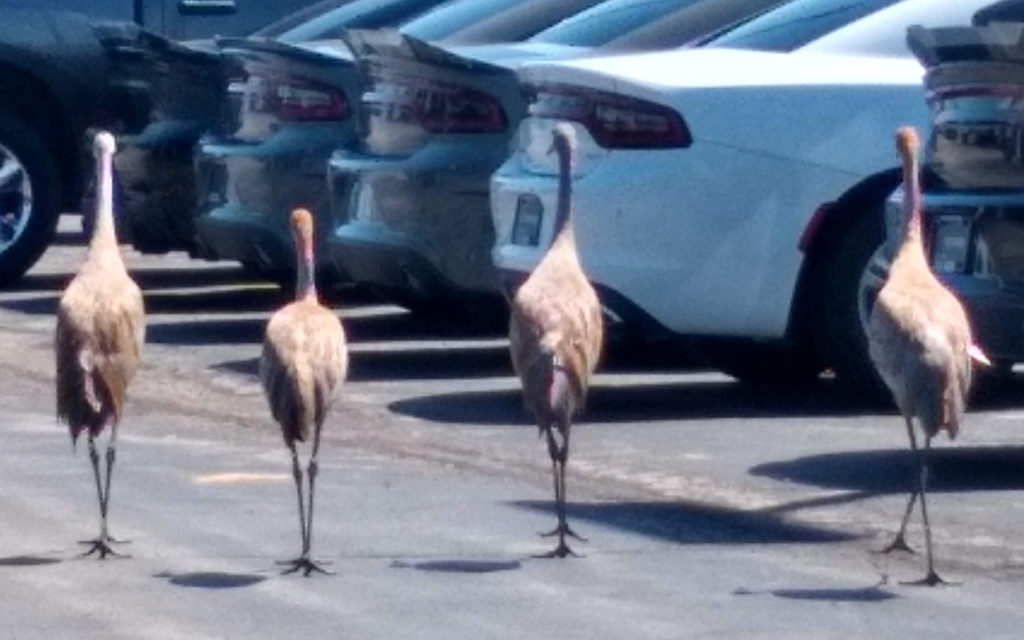
“Sandhill cranes we snuck up on at the car dealership when we test drove our (very quiet!) plug-in electric Chevy Bolt.” Photo by Kat Griffith.
Kat: I confess that my first thought upon seeing Hazel’s query was defensive self-justification: We ride our bikes to work and school all winter long! In Wisconsin! We’ve gotten through 30 years, including the teen years, as a one-car family! We sweat buckets mowing the lawn with a manual reel mower. We insulated our house to within an inch of its life. Give us some credit! My first step, honestly, had to be getting past my self-righteousness to a point where I was ready to lean into the challenge of doing much more.
My husband, Soren, on the other hand, immediately leapt into action. First, he found us a used Chevy Bolt, replacing our Honda Fit. Jake, a retired electrician and member of our worship group, helped us wire our garage for a level 2 charging station. Soren had been talking about getting solar electric panels forever; suddenly, he got on the phone and started calling contractors. Over the next year, he rose to new heights of tech geekiness researching solar panels, heat pumps, and metal roofs, and devoted a lot of time to dealing with overbooked, under-responsive contractors. With many bumps in the road, he managed to get metal roofing and two sets of solar panels installed: as far as we know, the first or nearly the first in our town. And at the end of our last First Day in January, in a joint meeting with Madison Meeting, Hazel did the honors and flipped the switches, turning on our solar generating system for an enthusiastic audience of far-flung Friends.
I eventually got my own decarbonizing nudges. One was to start moving toward a more vegan diet. I didn’t want to do this! But I wanted to want to, which experience tells me is an okay starting point. This nudge, which came to me several times during Experiment with Light sessions, feels truly Spirit-led, as was “In Defense of Blue Kool-Aid” (FJ Mar. 2020), in which I asked us to consider our ministry of food as an opportunity for greater inclusivity. My particular spiritual and practical challenge, perhaps, will be to unite these two deeply felt and possibly contradictory concerns. Some months on, I am finding the process easier, more satisfying, and more fun than expected. I doubt I’ll ever be a strict vegan, but if my Ministry of the Potluck introduces some folks to great vegan food, I will have been well used.
Another nudge I got was to consider investments beyond our own house. The climate doesn’t care whose house gets insulated. We ended up deciding to give money to Madison Meeting for its major carbon-footprint-reducing upgrade.
I’m a political junkie, so the nudge to sign on with the Citizens Climate Lobby was a no-brainer for me. The bigger surprise was a leading to run for county board. Now that I have been elected, visions of electric vehicle charging stations (currently rare as unicorns) and urban forestry initiatives dance in my head!
An unresolved issue between my husband (tech geek and early adopter) and me (storyteller and evangelist) is what sort of heat pump to install to replace our geriatric furnace. He wants to go for the most carbon-reducing and technologically advanced option: a geothermal heat pump. I want to go for the much cheaper air heat pump. If we spend a small fortune on a geothermal heat pump, will we become sort of irrelevant to our small town audience who mostly could not make such an investment? We agree that we want to spread the gospel of climate-aware home improvements through public outreach efforts. Which story will be the most locally compelling: the technological “gee whiz!” story or the “ordinary middle-class people can do this, too!” story? Our decision is a work in progress.
Soren struggles with complicated and consequential decisions like these. He has found, though, that being part of a community of Friends sharing dreams and doubts, convictions and concerns has helped him move beyond some of the worries and move ahead with the leading that had been growing in him for years.
I have long wished for a covenant community: a community that embraced mutual responsibility and a commitment to shared goals. Unexpectedly, our letter to Hazel seems to have become a kind of covenant between us. The commitments we have made have become a way of life, a “forever” thing. It’s not like we can fail to see what we have already seen or stop caring once our hearts have fully opened to this concern. We have Hazel and her query to thank.


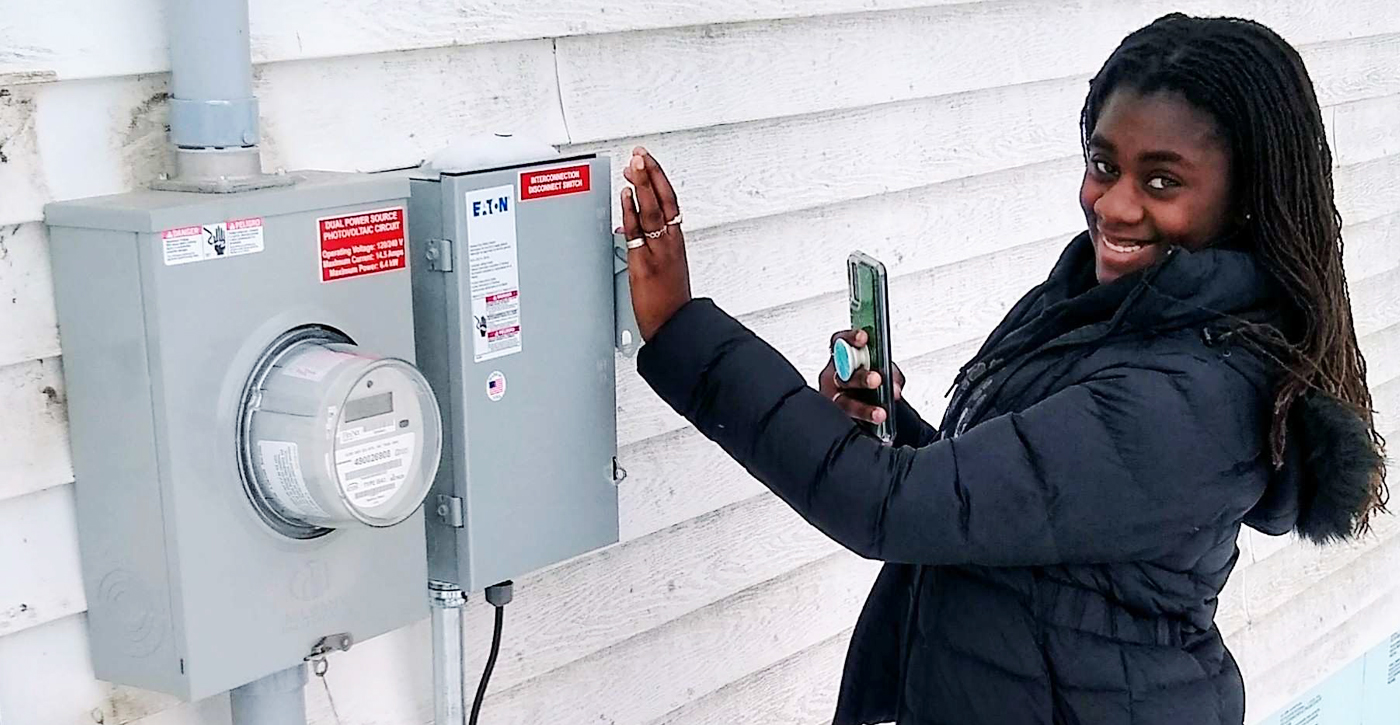
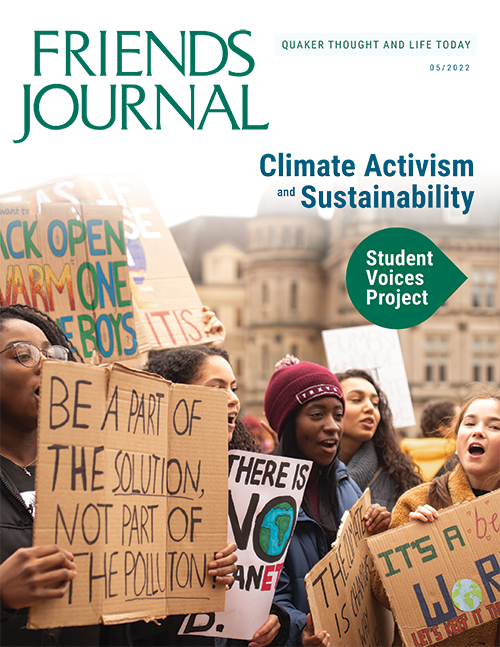
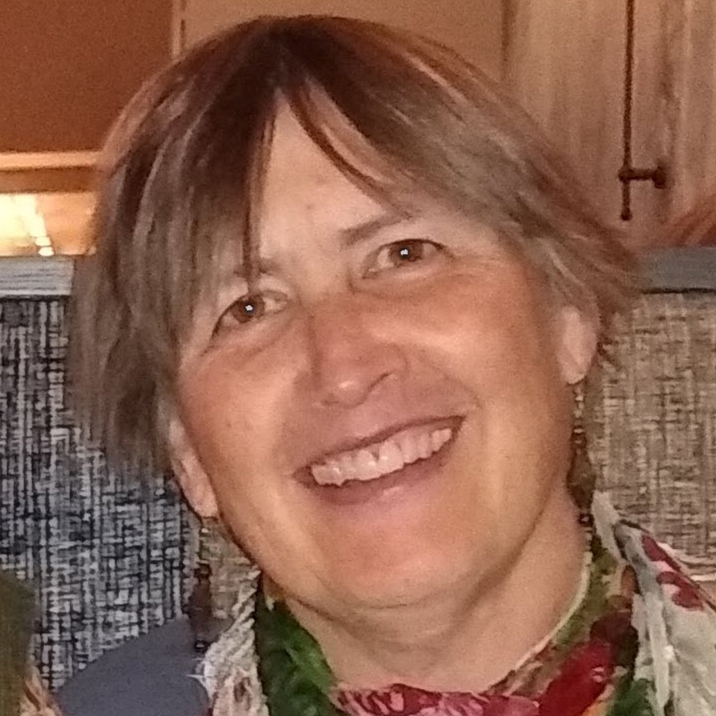

An update: thanks to Hazel’s query, our worship group’s support, and the brighter sun of June, our solar power system has now produced as much power (enough to light a 100-watt bulb 24/7 for 3 years) as we’ve used. Now may our way be lighted to beyond partly carbon-neutral living.